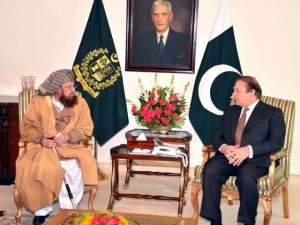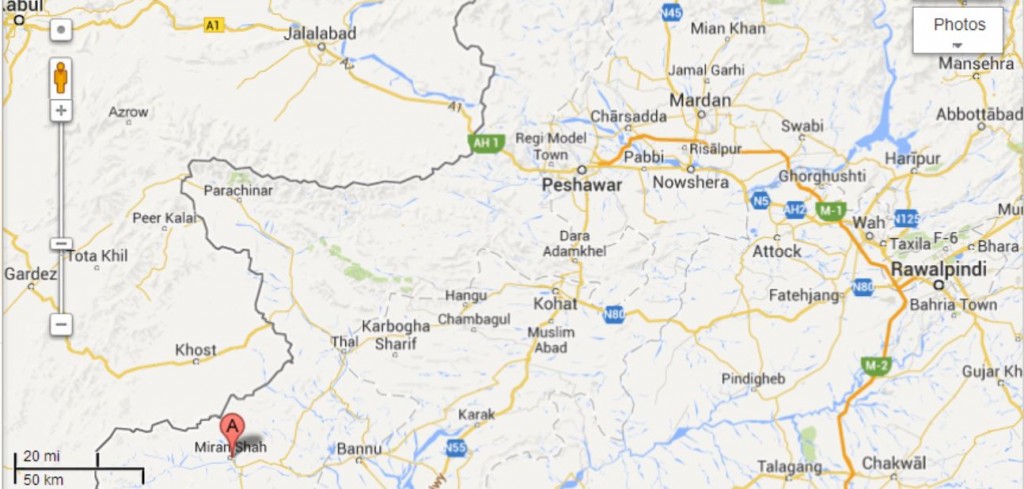Peace Talks Between Pakistan Government and Taliban Are Underway
After a cancelled meeting earlier in the week, peace talks between Pakistan’s government and the Tehrik-e-Taliban Pakistan (TTP), a Taliban group that has been carrying out terrorist attacks against targets inside Pakistan, have gotten underway. Although Reuters reported that the meeting was in an undisclosed Islamabad location and Dawn reported that the meeting was in Khyber Pakhtunkhwa House in Islamabad, it appears that both stories have elements of truth. From the Express Tribune:
The meeting of government and Tehreek-e-Taliban Pakistan (TTP) peace talks committees started at an undisclosed location in Islamabad at 2:24pm on Thursday, Express News reported.
The meeting later shifted to Pakhtunkhwa House.
The Dawn story reports that there was a “cordial atmosphere”, but adds another very important point:
Sources said that talks were being held in a cordial atmosphere and that negotiations would now be continued on a daily basis.
With daily meetings planned, it sounds like the talks could be more than a mere formality.
Returning to the Dawn story, we have the line-up of negotiators for each side:
The government’s negotiators include Irfan Siddiqui, special assistant to the prime minister and coordinator of the committee, Rustam Shah Mohmand, a former Pakistan ambassador to Afghanistan, Peshawar-based journalist Rahimullah Yousufzai and retired Major Amir Khan.
Negotiators from the TTP’s side include Maulana Samiul Haq, Maulana Abdul Aziz and Professor Mohammad Ibrahim.
/snip/
The TTP had initially also nominated Pakistan Tehrik-i-Insaf (PTI) chief Imran Khan and former Jamiat Ulema-i-Islam (JUI-F) lawmaker Mufti Kifayatullah in their committee. However, both later refused to be part of the committee.
Although none of the stories point it out, I find it very interesting that at least part of today’s discussions were held at Khyber Pakhtunkhwa House. Even though Imran Khan declined to be a part of the negotiating team for the TTP, recall that his PTI party controls the government in Khyber Pakhtunkhwa province. After a bit more poking around, I found this version of an AFP story on the meetings that has a photo of the outside of Khyber Pakhtunkhwa House. Note the emblem on the gate in the photo. It clearly is the emblem of the Khyber Pakhtunkhwa province and not of Pakistan’s government (see here), suggesting that Khan’s provincial government may well be playing the role of a host or facilitator for the talks. There also appears to be a restaurant in Islamabad with the name Khyber Pakhtunkhwa House, but the AFP photo appears to rule out the restaurant.
An official speaking to Reuters also added to the importance of the meetings:
“The progress of the talks will be submitted to the prime minister,” the government official, who declined to be named, as he is not authorized to comment on progress of the talks, told Reuters.
Recall that Prime Minister Nawaz Sharif had the establishment peace talks with the Taliban as one of his main campaign promises. Note also that Imran Khan made ending US drone strikes one his main campaign issues. With Sharif monitoring the talks and Khan providing a venue (at least for today), it then becomes very interesting that the spokesperson for Pakistan’s Foreign Office today said that the announced US slowdown on drone strikes is not enough. She stated that the strikes have to end altogether. Although Sharif’s government has called for an end to drone strikes several times in the past, reiterating it today could well be important in the context of the talks and Khan’s potential role as a mediator of sorts.


